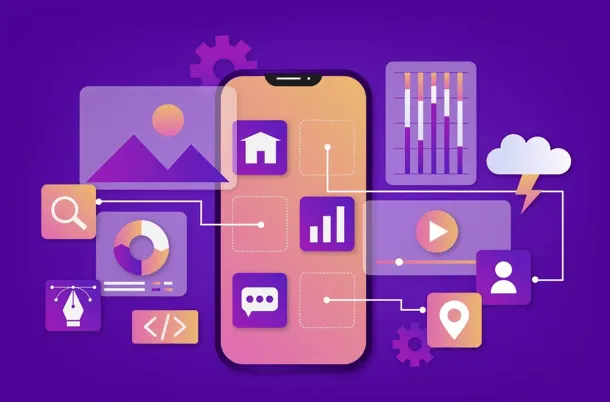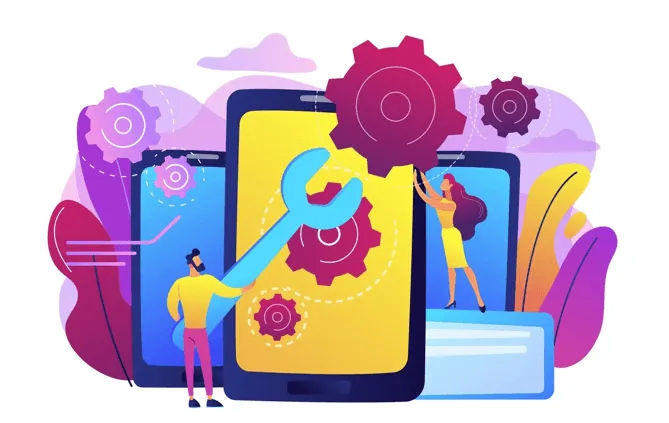Mobile apps are a big part of people’s life but keeping their quality high is not easy. Different types of devices, operating systems and network situations make testing harder.
It is a difficult path to find ways that effectively deal with these problems and offer an excellent user experience.
Now, let’s disucss the biggest challenges faced during mobile app testing and explore techniques to conquer them for releasing top-notch applications.
What is User Experience?
User experience (UX) defines the overall user experience when interacting with a product or service. This includes ease of navigation, speed of download and usability and how well the product meets the user’s needs.
UX also focuses on the emotional aspect of the interaction. That considers how the user feels when using the product and how well their expectations are met.

Why is Mobile UX Testing Necessary?
Testing UX on mobile applications is an essential step to guarantee the ease-of-use and overall high performance. By doing this, we make sure any possible problems that could affect users are found and fixed. These issues might include complicated navigation or slow reaction times.
The quality of UX testing has a direct influence on how easy it is to understand the app and if it meets users’ expectations. Both factors greatly affect their happiness with using it as well as their return again in future times. Also, good user experience can greatly enhance the popularity and competitive edge of the application.
Difficulties in understanding and needs for tests require a clear analysis and algorithm. So if such arise it is better to check with the experts on any issues of mobile testing.
Understanding Mobile App Testing Challenges
Testing mobile apps can be a daunting task as many factors can affect the results. These include different devices, screen sizes, operating systems and unpredictable network conditions.
Let’s take a look at these key issues that complicate the test process:
1. Device Fragmentation
To keep the application working stably on all devices, it needs to perform an advanced testing approach. In addition, the application must take into account numerous device display specifications. This requires a thorough testing approach to guarantee that the application works consistently across multiple screens and configurations.
Solution: To effectively deal with device fragmentation, testers should focus on testing the app on the most popular models that people use. Cloud testing platforms might test the application on various real devices and configurations that increase coverage and quality. Automated tools further streamline the process by allowing you to run tests on multiple devices simultaneously, speed up the detection and correct errors.
You may also like to read about Tip to Choose the Best Mobile App Development Company
2. Operating System Variability
Mobile applications need to work on various operating systems (OS). However, new versions and updates can cause compatibility issues that weren’t there before. This makes it difficult to support apps on all platforms.
Solution: Testing applications on different versions of OS is essential to adapt to changes. Continuous integration (CI) and continuous deployment (CD) systems automate testing and help ensure compatibility with new OS versions. In addition, using device farms and emulators can allow you to test applications on multiple OS versions efficiently.

3. Performance and Battery Life
Mobile apps should be optimized for high performance and battery economy. Apps that slow down the device or drain the battery quickly can negatively impact the user experience. This will likely lead to bad feedback in the future.
Solution: Performance testing should be a core element of app validation which measures response time and overall efficiency. Planning and implementing a right mobile testing strategy lets you identify bugs and optimize the code better. Monitoring battery usage while using the app to avoid excessive battery drain is essential too.
4. Network Variability
Mobile apps often use network connections which can vary widely depending on location, signal strength and network type (e.g., 4G, 5G, Wi-Fi). Testing under different network conditions will provide the app’s stability and performance especially when the connection is slow, unstable or drops out entirely.
Solution: Simulate varied network conditions during tests and evaluate the application’s behavior in different scenarios. Use network throttling tools to test the application’s response to poor connections and fluctuations. Then evaluate if it can handle scenarios such as switching between Wi-Fi and mobile data without crashing or losing data.
5. Security and Privacy
Application security is perhaps the most important aspect of developing both new and existing applications. It is critical to find out that applications meet the highest security standards. This includes both protecting user data and preventing unauthorized access to sensitive information.
Solution: Update security protocols and conduct penetration testing of potential threats. That helps detect and eliminate them promptly, ensuring reliable protection of user data and maintaining a high level of application security.
6. Integration with Third-Party Services
Many mobile apps rely on third-party services for functionality such as payment gateways, social media integration or analytics tools. These dependencies can create problems when third-party services experience downtime, broken updates and sometimes even changes to their APIs.
Solution: Conduct thorough testing of each third-party service on which the mobile app depends. Also included modeling scenarios when the service is unavailable or slow to respond. Regularly monitor and update integrations as third-party services evolve. Don’t forget backup mechanisms to ensure the application is up and running in the event of an external service failure.
Additionally, it’s crucial to perform E2E testing to verify that all components, including third-party integrations, work seamlessly together. This should be done alongside regression testing to ensure that new updates or integrations do not negatively affect the existing functionality of the app.
7. Operating System Updates
Operating system updates are critical to ensuring application compatibility and functionality. These updates may introduce new features and change existing APIs. Also, it might change system behavior that can cause problems for existing applications.
Solution: Regularly test your app against new OS updates to provide compatibility. Employ automated tools for tests to assess how new updates impact your mobile app quickly. Stay tuned for upcoming OS changes and adapt your testing strategy. This will reduce compatibility issues and ensure that the application continues to run smoothly with each new update.
Conclusion
To achieve the user satisfaction and increase the number of installs, mobile apps need to be tested regularly. Different devices and OS complicate this process. However, these challenges can be overcome by effectively utilizing modern methods such as automation, cloud platforms and security testing.
Implementing such methods allows you to create a comprehensive mobile testing strategy that ensures the stable and flawless performance of apps that meet user expectations.





